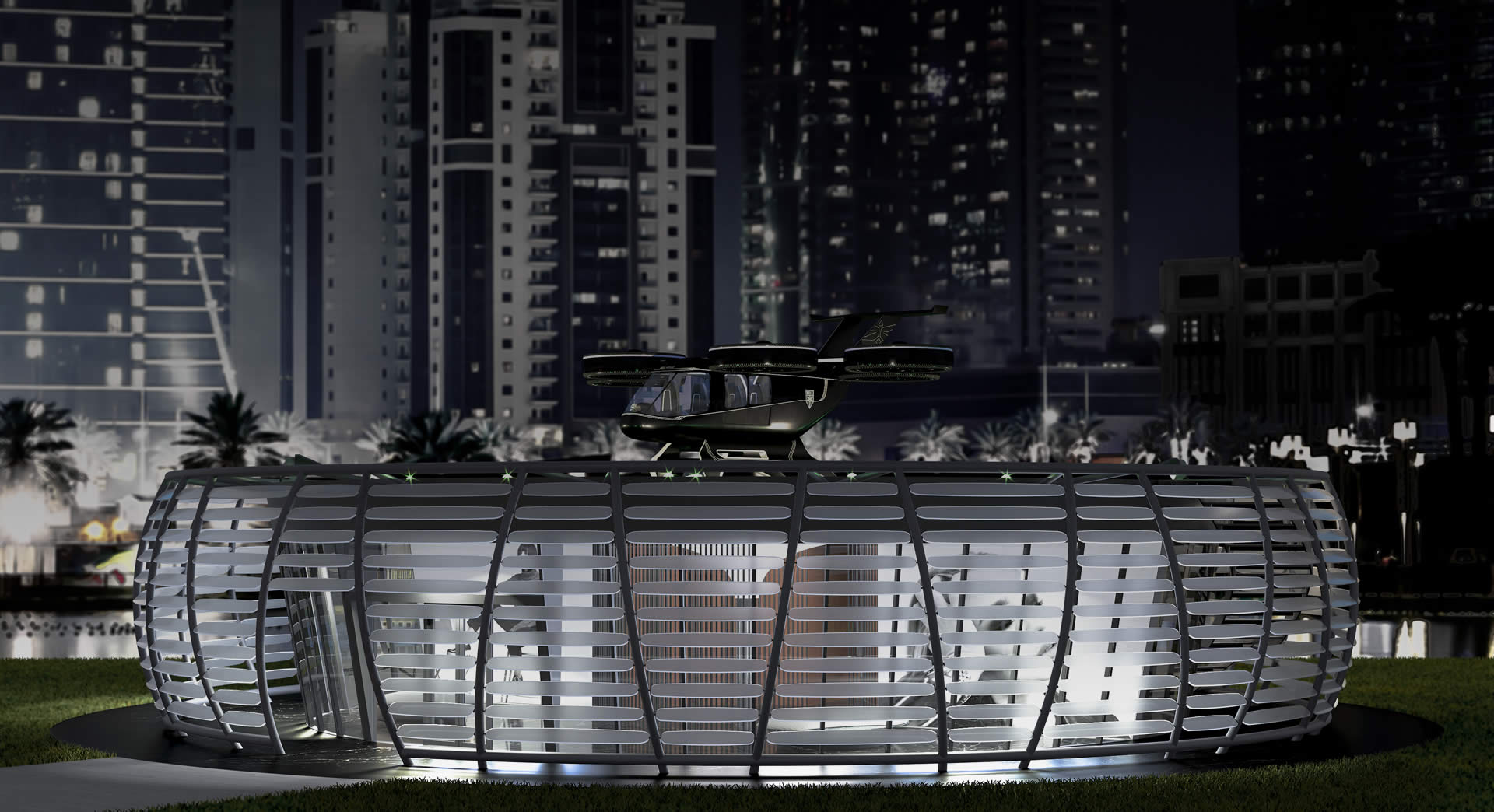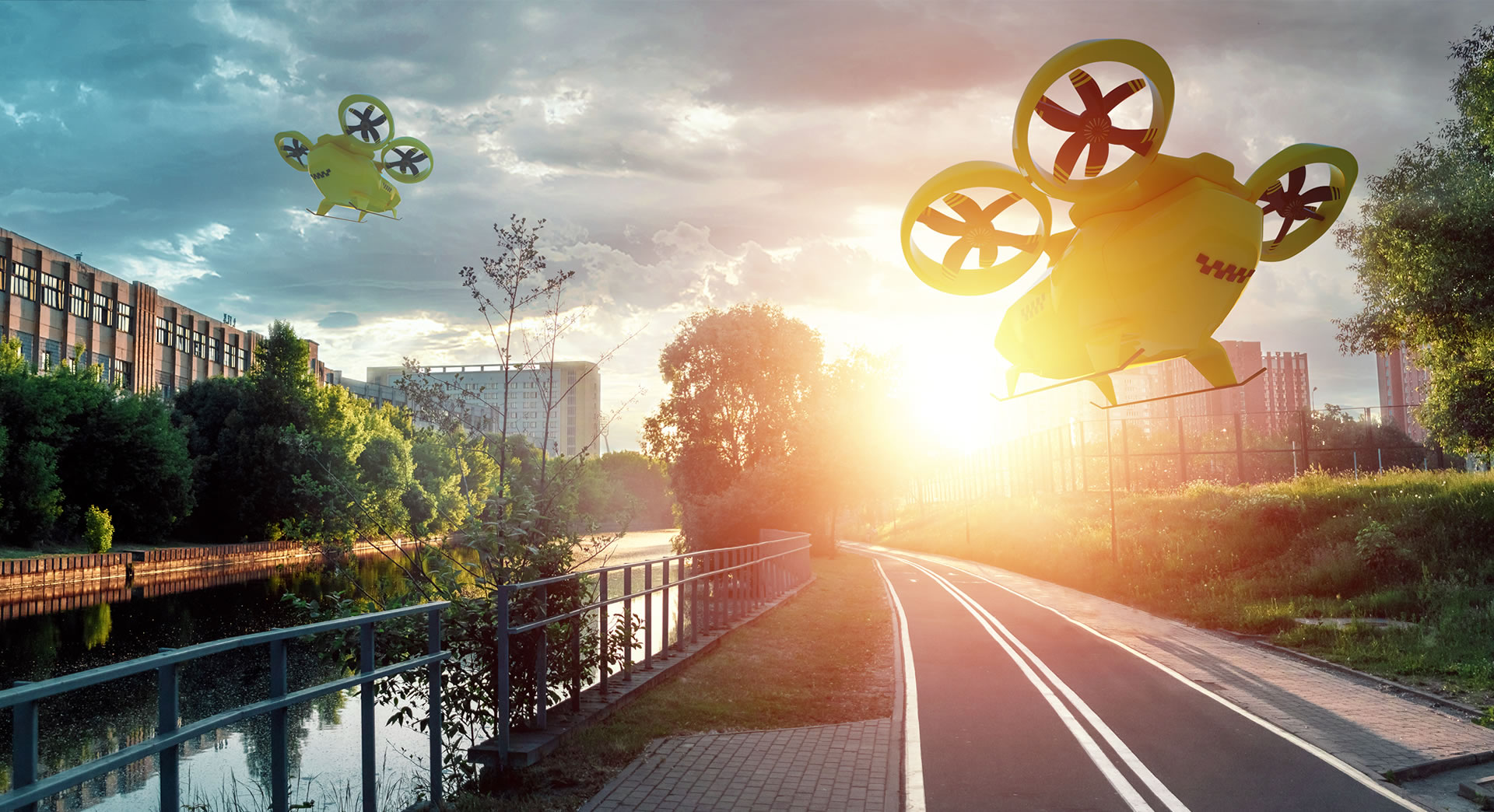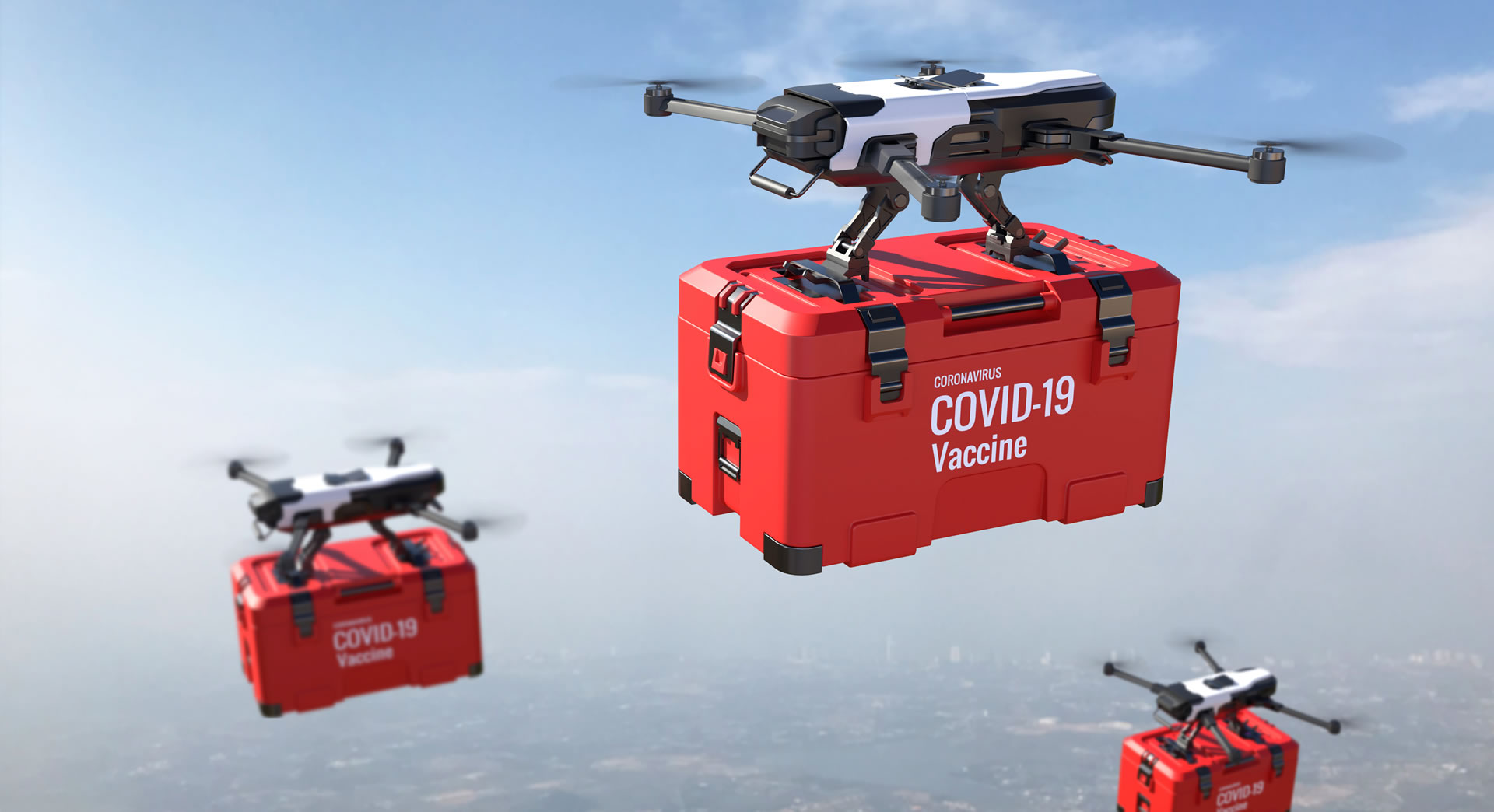Imagine leaving home and being able to easily choose the fastest way to reach the office, attend a meeting, or moving more quickly in a big city. Future mobility goes beyond the idea of the car and opens up to the third dimension of transport: air transport.
The traffic in our cities is more and more congested, with pollution making air unbreathable, and thus posing a serious threat to the physical safety and health of those who live there. This is why it is necessary to take advantage of urban air mobility, to meet work and commuting needs. To this end, we may resort to the new generation of taxi drones and helicopters, both for passenger transport and goods distribution, as well as for emergency medical service and civil protection.
Helidecks has designed a new multi-service landing and take-off station for drones and helicopters: Dronepad Italy. The aerial experience will revolutionise our idea of movement, so far limited by the extremely chaotic, noisy, and polluting traffic of cars and public road transport.

This urban air mobility support system helps reducing the environmental impact by means of battery-powered electric motors, eliminating a huge amount of green-house gas emissions, thus improving the quality of life of people and the environment they live in, in total safety and respecting any pre-existing architectural plans.
We started wondering what purpose VTOL transport would have for the transport of passengers and how and where the same VTOL would fly.
Certainly, “drone” transport has the main objective to move people as fast as possible from one place to another avoiding land traffic.
So, a city that activates a taxi service with drones needs to move passengers inside the metropolis taking them from the generally busy traffic areas and move them to other areas of the city where they could still find a considerable amount of traffic.

To allow this to happen and to maintain the main feature of speed, it is necessary to create an efficient network of DRONEPADs (VERTIPORTS) located in easily accessible strategic areas of the city, such as pavements, outside shopping centres, where people walk or recreational areas. The DRONEPAD must have the same characteristics as the metro. Those who would like to move by drone, have to reach the nearest DRONEPAD and just leave!
It is impossible to think of activating a drone taxi service and using the heliports on the rooftops to land. It is unthinkable! It would lose the feature of rapidity, having first to reach the rooftop and then go down to ground floor, not even considering the fact of bringing strangers into a hotel or other structure. Without a suitable DRONEPAD network, a drone taxi service would not be able to exist!

AIR METRO AND AIR TAXI
The air metro use case resembles current public transit options such as subways and buses, with pre-determined routes, regular schedules, and set stops in high-traffic areas throughout each city
The Air Taxi, on the other hand, allows the customer to independently decide the route and then the landing and take-off stations. Of course, the Air Taxi service would be more expensive than the air metro.
LAST-MILE DELIVERY
Last-mile delivery is rapid package delivery from local distribution also with collection at Vertiport.
Deliveries are unscheduled and flight times are determined as orders are placed.
The US Federal Aviation Administration has recently granted Amazon’s Prime Air drone service approval to operate a fleet of drones that will soon be able to deliver packages to customers.

DELIVERY OF LIFE-SAVING DRUGS AND VACCINES
Fast delivery to hospitals and vaccination centers.
The supplier uses the vertiport / Dronepad as a sorting and delivery center.